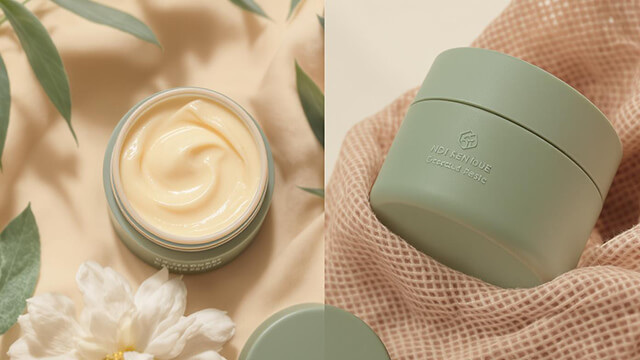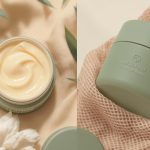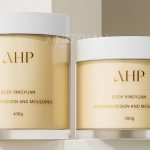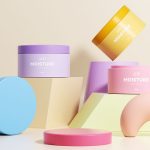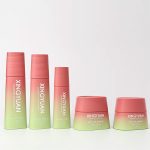Plastic vs Glass Jars for Cosmetic Packaging: Pros and Cons
Choosing the right packaging is just as important as developing the formula inside. For cosmetic brands, the decision often comes down to two main options: plastic jars and glass jars. Both materials have unique advantages and challenges, and choosing incorrectly can affect your product’s positioning, cost, and even customer satisfaction.
Plastic jars are lightweight, durable, and cost-effective, making them ideal for mass-market and travel-friendly cosmetics. Glass jars, on the other hand, feel premium, eco-friendly, and luxurious, but they are heavier and more fragile.
In this article, I’ll compare plastic and glass jars across key factors like durability, branding, logistics, and sustainability—so you can make the best decision for your cosmetic line.
Outline
Plastic Jars: Overview
Plastic jars are widely used across the cosmetic industry, from face creams and scrubs to hair masks. They are available in materials like PET (polyethylene terephthalate), PP (polypropylene), and double-wall acrylic jars for premium finishes.
Brands choose plastic because it offers:
- Lightweight convenience for shipping and portability.
- Lower cost per unit compared to glass.
- Design flexibility (shapes, colors, finishes).
However, plastic is sometimes criticized for lower sustainability and less premium feel compared to glass.
Glass Jars: Overview
Glass jars are often associated with luxury cosmetics. They provide excellent protection against oxygen and moisture, making them ideal for sensitive formulas like anti-aging creams and serums.
Brands choose glass because it offers:
- Premium look and feel, aligned with luxury branding.
- Eco-friendly perception, as glass is infinitely recyclable.
- High product compatibility, with no risk of leaching.
The downsides are that glass jars are fragile, heavy, and more expensive to ship.
Plastic vs Glass Jars: A Direct Comparison
Here’s a side-by-side comparison of plastic and glass jars for cosmetic packaging:
| Factor | Plastic Jars | Glass Jars |
| Weight | Lightweight, easy to carry | Heavy, less portable |
| Durability | Shatter-resistant, travel-friendly | Fragile, breaks easily if dropped |
| Cost | Lower cost per unit, affordable | Higher cost per unit, premium pricing |
| Design Flexibility | Multiple shapes, colors, finishes | Limited shapes, usually clear/frosted |
| Product Safety | Good for most formulas, but some leaching risk | Excellent barrier, no leaching |
| Sustainability | Recyclable but lower eco-perception | Fully recyclable, eco-friendly image |
| Customer Perception | Everyday, practical, travel-safe | Premium, luxurious, eco-conscious |
| Shipping & Logistics | Cheaper to ship, saves storage space | Higher freight cost, more fragile in transit |
Pros and Cons of Plastic Jars
Pros of Plastic Jars:
- Cost-effective, especially in bulk.
- Lightweight, lowering shipping and distribution costs.
- Durable and less prone to breakage.
- Wide variety of sizes, shapes, and finishes.
Cons of Plastic Jars:
- Perceived as less premium.
- Environmental concerns if not recycled.
- Can be scratched or deformed under high heat.
👉 Plastic jars are best for mass-market skincare, travel kits, and products that require durability.
Pros and Cons of Glass Jars
Pros of Glass Jars:
- Premium appearance for luxury positioning.
- Excellent product compatibility, especially for sensitive formulas.
- Eco-friendly image, as glass is recyclable.
- Heavy weight enhances the feeling of quality.
Cons of Glass Jars:
- Expensive to produce and ship.
- Heavy and less portable.
- Fragile, prone to breakage during handling.
👉 Glass jars are best for luxury face creams, serums, and eco-conscious skincare lines.
Which Should You Choose for Your Cosmetic Line?
Your choice between plastic and glass jars should depend on:
- Product Type
- Everyday products (scrubs, masks, travel skincare) → Plastic
- Premium or sensitive formulas (anti-aging creams, serums) → Glass
- Target Market
- Mass-market → Plastic (affordable, practical)
- Luxury boutique → Glass (premium, eco-conscious)
- Logistics
- E-commerce and international shipping → Plastic (less breakage risk)
- Boutique retail → Glass (luxury image)
Practical Tips for Decision-Makers
- If you’re unsure, test both: offer a 2oz glass jar for premium samples and an 8oz plastic jar for everyday use.
- Consider a hybrid approach: use plastic for large-volume items (scrubs, masks) and glass for premium creams.
- Don’t overlook branding add-ons: custom labels, metallic lids, or frosted finishes can make plastic look more premium.
Final Thoughts
Both plastic and glass jars have important roles in cosmetic packaging.
- Plastic jars offer affordability, durability, and design flexibility, making them perfect for everyday skincare and mass-market distribution.
- Glass jars provide a luxury feel, eco-friendly appeal, and formula safety, ideal for boutique and premium lines.
The best choice depends on your brand positioning, logistics, and customer expectations. Remember: the jar is not just packaging—it’s part of the story your product tells.
Decision Flow Chart: Plastic vs Glass Jars
🎯 Goal:What’s your product and brand goal?
1️⃣ What type of product are you packaging?
- Everyday skincare (scrubs, masks, hair products, body care) → Go to Plastic Jars branch
- Luxury creams, serums, anti-aging, natural/eco lines → Go to Glass Jars branch
2️⃣ Who is your target market?
- Mass-market buyers (supermarkets, e-commerce, pharmacies) → Plastic
- Premium/luxury buyers (boutique shops, spas, prestige beauty stores) → Glass
3️⃣ How will your products be sold and shipped?
- Long-distance / e-commerce / export → Plastic (lighter, less fragile)
- In-store retail / boutique presentation → Glass (premium display value)
4️⃣ What’s your sustainability positioning?
- Eco-conscious, want to highlight recyclability → Glass
- Practical, cost-driven but recyclable plastics acceptable → Plastic
✅ Final Recommendations:
Choose Plastic Jars if:
- You prioritize low cost, durability, lightweight shipping
- Your products are mass-market, travel-friendly, or larger volume
Choose Glass Jars if:
- You prioritize luxury branding, eco-friendly appeal, premium feel
- Your products are sensitive formulas or boutique skincare
